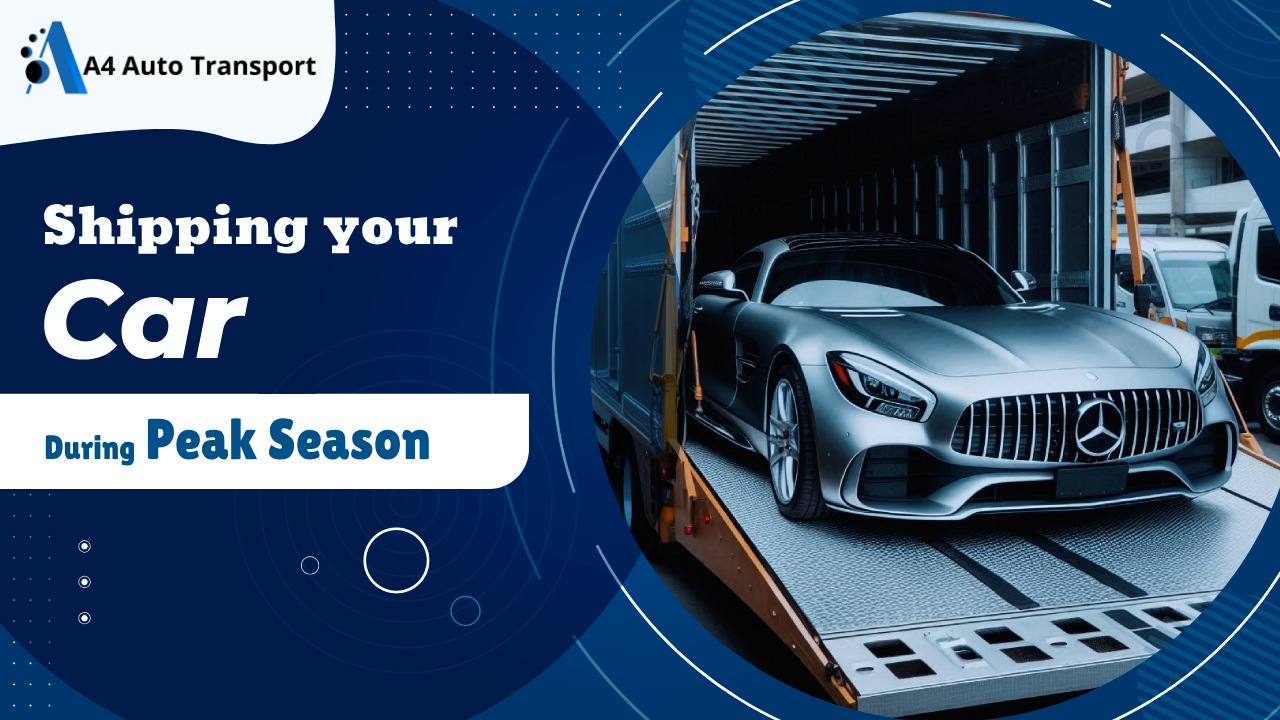Open Carrier Car Shipping: Cost-Effective Auto Transport Service

Moving a vehicle across the country or even a few states can be daunting. Whether relocating, purchasing a car from a distant seller, or sending a vehicle to a loved one, finding a reliable and cost-effective auto transport solution is crucial. One of the most popular options is open carrier car shipping. This blog explores what open carrier car shipping is, its benefits, considerations, and tips for a smooth experience.
While open car shipping or open auto transport methods expose vehicles to external elements and potential road debris, reputable shipping companies take measures to ensure their safety. With advantages such as affordability, wide availability, and visible inspection throughout the process, open car shipping offers a reliable option for moving short and long distances.
What is Open Carrier Car Shipping or Open Car Shipping?
Open carrier car shipping is a transportation method to move vehicles from one location to another. Open carrier car shipping involves transporting vehicles on an open trailer, typically accommodating 8 to 10 cars at a time. These trailers are common on highways and offer a practical and economical way to move vehicles.
Benefits of Open-Carrier Car Shipping
Open carrier car shipping is often more affordable compared to other methods, making it an attractive choice for individuals and businesses alike
Open carrier services are widely available, allowing for greater flexibility in terms of scheduling and pickup locations.
Open carriers can accommodate multiple vehicles at once, enabling efficient transportation and reducing the overall transit time.
The open design of the carrier allows for easy inspection of the vehicles during loading, transit, and unloading, providing peace of mind to the vehicle owners
Reputable open carrier car shipping companies adhere to strict safety protocols, ensuring that your vehicle is handled with care throughout the shipping process.
Factors to Consider
Before opting for open carrier car shipping, there are a few factors to consider:
As the vehicles are transported in an open carrier, they are exposed to external elements such as weather conditions, dust, and road debris. While carriers provide some protection, there is still a minimal risk of potential damage.
Although vehicles are securely fastened onto the carrier, they are more susceptible to theft or unauthorized access compared to enclosed carriers.
If you are transporting your vehicle during extreme weather conditions, such as heavy rain or snowstorms, it is important to discuss the potential risks with the shipping company.
How to Choose a Reliable Open Carrier Car Shipping Service
To ensure a smooth and secure transportation experience, consider the following when choosing a reliable open carrier car shipping service:
- Reputation and Experience: Look for top car shipping companies, renowned for their solid reputation and extensive experience in the industry. To make an informed decision, read customer reviews and testimonials that reflect the level of satisfaction among previous clients.
- Licensing and Insurance: Verify that the shipping company holds all the necessary licenses and insurance coverage required for transporting vehicles. This ensures that your vehicle is protected in the event of any unforeseen circumstances.
- Transparent Pricing: Request detailed pricing information, including any additional charges or fees. Compare quotes
Comparison of Open vs. Enclosed Carrier Car Shipping
When it comes to transporting your vehicle, you have two primary options: open-car shipping and enclosed-car shipping. Both methods have their advantages and considerations. In this section, we will explore the differences between open-car shipping and enclosed-car shipping to help you make an informed decision.
| Feature | Open Carrier Car Shipping | Enclosed Carrier Car Shipping |
| Cost | Lower | Higher |
| Vehicle Capacity | 8-10 vehicles | 2-6 vehicles |
| Availability | High | Lower |
| Protection from elements | Exposed to weather and debris | Shielded from weather and debris |
| Ideal for | Standard vehicles, daily drivers | Luxury, classic, or high-value cars |
| Insurance coverage | Standard | Higher |
Average Costs of Open Carrier Car Shipping
| Distance | Average Cost (Sedan) | Average Cost (SUV/Truck) |
| 0-500 miles | $300-$500 | $400-$700 |
| 500-1000 miles | $500-$700 | $600-$900 |
| 1000-1500 miles | $700-$900 | $800-$1100 |
| 1500-2000 miles | $900-$1100 | $1000-$1300 |
| 2000+ miles | $1100-$1500 | $1300-$1700 |
Vehicle Preparation Checklist
- Clean the Vehicle
Thoroughly clean the exterior and interior. - Remove Personal Belongings
Take out all personal items from the car. - Document Condition
Take photos and note any existing damage. - Check for Leaks
Ensure there are no fluid leaks. - Disable Alarms
Turn off any car alarms to prevent activation during transit. - Secure or Remove Loose Parts
Secure or remove any loose exterior parts like antennas or spoilers. - Fuel Level
Keep the fuel tank to about 1/4 full. - Tire Pressure
Ensure tires are properly inflated.
Vehicle Types and Personal Preferences
The type of vehicle you are transporting and your personal preferences also play a role in deciding between open-car shipping and enclosed-car shipping. If you have a regular vehicle that doesn’t require extra protection or if you are comfortable with the minimal risks associated with open car shipping, it can be a suitable option.
However, if you own a luxury vehicle, a classic car, or a vehicle with sentimental value, enclosed car shipping may be the preferred choice. The added protection and peace of mind offered by enclosed carriers can outweigh the higher cost.
Conclusion:
Open carrier car shipping is a cost-effective and reliable way to transport vehicles nationwide. By understanding its benefits and considerations, you can ensure a smooth and stress-free experience. Follow the tips provided for optimal results and safe travels for your vehicle.
FAQ’s
Is open car shipping safe for my vehicle?
Open car shipping is generally safe for vehicles, as reputable shipping companies take precautions to secure the vehicles during transit. However, it’s important to note that there is a minimal risk of potential damage from external elements or road debris. If you have concerns about the safety of your vehicle, you may consider enclosed car shipping for added protection.
How long does open car shipping take?
Toggle ContentThe duration of open car shipping depends on various factors such as the distance, route, and any unforeseen circumstances. Generally, it takes between 5 to 14 days for domestic shipments and can vary for international shipments. It’s advisable to consult with the shipping company to get an estimated timeframe based on your specific requirements.
Can I ship personal belongings along with my vehicle during open car shipping?
It is generally recommended not to ship personal belongings inside the vehicle during open car shipping. Shipping companies primarily focus on transporting vehicles and may have restrictions or regulations regarding the transportation of personal items. It’s best to consult with the shipping company beforehand to understand their policies and guidelines.
Do I need insurance for open car shipping?
While reputable open car shipping companies carry insurance to cover potential damages, it’s advisable to check the insurance coverage provided. In some cases, additional insurance may be recommended for added peace of mind. Review the terms and conditions of the shipping company’s insurance policy or consult with them to ensure your vehicle is adequately covered during transit.
What should I do before handing over my vehicle for open car shipping?
Before shipping your vehicle, it’s essential to take a few steps to prepare it for transportation. This includes thoroughly cleaning the vehicle, documenting any pre-existing damage, removing personal belongings, ensuring the fuel tank is not more than a quarter full, and disabling any toll tags or electronic devices. Following these preparations will help ensure a smooth shipping process.
a4AutoTransport is a group of auto transport researchers and experts that comes in handy for anyone who wants to move their car/vehicle without putting extra miles on the odometer. At a4AutoTransport, We researched over a hundred car shipping companies, interviewed real customers and industry leaders, and collected nearly 500 quotes to find the nation’s best auto transport companies. With our combined 5 years of industry experience and research, we’ll help you find the right car shipper for your budget.






